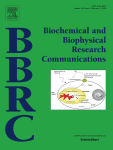
 Here’s an interesting case: We’ve found two retracted papers that describe the same gene, and both have nearly identical retraction notices. What’s unusual is that the two papers don’t have any authors in common, and appeared in two different journals published by two different companies.
Here’s an interesting case: We’ve found two retracted papers that describe the same gene, and both have nearly identical retraction notices. What’s unusual is that the two papers don’t have any authors in common, and appeared in two different journals published by two different companies.
The cause of both papers’ demise: Plagiarism, and use of unpublished data without permission “from an unnamed source,” who wishes to remain that way. The author of one of the papers confirmed to us that the unnamed source is a “3rd party service company.” Springer told us that the third party in the other paper, however, is another researcher.
It’s a puzzling case, to be sure. We think we have uncovered some of what happened, but remain slightly fuzzy on the details.
Here’s the first retraction, for “KDM3A interacted with p53K372me1 and regulated p53 binding to PUMA in gastric cancer,” originally published online September 30 by Biochemical and Biophysical Research Communications:
This article has been retracted at the request of the authors. The Editor-in-Chief has decided to retract this article, and the Publisher supports the decision of the Editor-in-Chief. This article has been found to contain plagiarized materials. Unpublished data was obtained from an unnamed source and has been used without permission. The owner of the data does not wish to be named in this retraction notice.
The paper has not been cited, according to Thomson Reuters Web of Science.
Essentially the same retraction notice appears for “KDM3A confers metastasis and chemoresistance in epithelial ovarian cancer,” originally published online October 24 in the Journal of Molecular Histology. The paper is not yet indexed by Thomson Reuters Web of Science.
BBRC is published by Elsevier; we asked the editor, Wolfgang Baumeister, about the overlap in the language of the retraction notice from the other journal, published by Springer:
Essentially, Springer seems to have copied the retraction notice. The note we wrote was posted on December 28, and theirs followed in January.
Baumeister told us how the issue with the data came to light:
A complaint from the owner of the “unpublished data” has been sent to the journal and the two corresponding authors (via the same message).
Xueming Li, a lead author on the BBRC paper and The First Affiliated Hospital of Nanchang University, told us that some of the data came from a 3rd party:
Half the data presented were ours (Actually, the supplementary figures were our own findings), the remaining (mechanistic data) was from the 3rd party service company.
And that that data told a:
scientific story about the underlying mechanism by which KDM3A played role in gastric cancer.
We asked Li what the name of the company is, but did not hear back.
Gulina Kuerbang, the lead author on the Journal of Molecular Histology paper, who is based at the Affiliate Tumor Hospital of Xinjiang Medical University in China, told us:
All the data on the clinical tissue level were generated on our own. But, with regards to the data on cell line level, my student produced on their own without my supervision.
She said:
Figure 5 was claimed to be same as the one of the figure from the [other paper.]
Indeed, a panel of Figure 5 from Kuerbang’s paper is similar to Figure 1B from the BBRC paper:
We asked if she had any connection to the authors of the other paper:
No association at all. I don’t know them at all.
In a follow-up email, we asked her the identity of the “unnamed source” in the retraction notice, and whether she used the services of a manuscript editing company, but have not heard back.
A spokesperson for Springer, which publishes Journal of Molecular Histology, told us that the “unnamed source” in this case was another researcher:
Springer was contacted by a third party who claimed that figures from his unpublished data, which was presented in PP format at a conference, were stolen and used by the authors of these articles. Given that we were made aware of the other article – and were notified after Elsevier, which had already decided to retract the BBRC paper – it appears that Springer has used the same wording in the retraction. The problem in both articles was identical, therefore the explanation is bound to sound nearly identical.
As explained in the retraction note, the owner of the data does not wish to be identified.
Hat tip: Rolf Degen
Like Retraction Watch? Consider making a tax-deductible contribution to support our growth. You can also follow us on Twitter, like us on Facebook, add us to your RSS reader, sign up on our homepage for an email every time there’s a new post, or subscribe to our new daily digest. Click here to review our Comments Policy. For a sneak peek at what we’re working on, click here.
“..told us that some of the data came from a 3rd party…:” and should they not have been cited in the paper?
All very dubious. I hope that the institutions were these researchers work investigate their behaviour.
OK, the problem is identical, but an identical retraction note by chance? Hard to believe and really an insult to our intellect. Baumeister’s explanation seems a lot more likely.
Springer should retract the retraction note due to obvious plagiarism and include an apology. And then republish a self-worded retraction note.
So a journal plagiarized a retraction notice. No wonder they can’t recognize plagiarism when they see it.